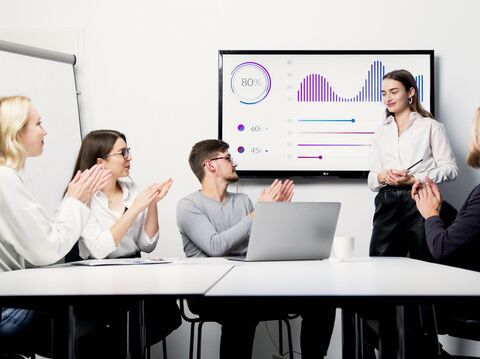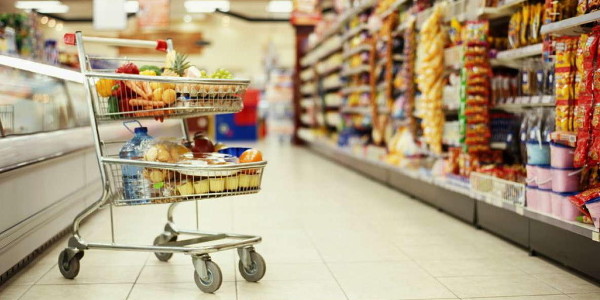How to Boost Modern Trade and Organised Trade by Using Effective Operating Model

Today's retailers are transforming quickly to focus more on the customer and run more effectively. Millions of small shops use numerous social media platforms to engage with customers directly. This includes video-driven commerce, conversational commerce on chat platforms, and a thriving social reseller community.
Retailers need to rethink their operating model to accomplish the demanding aims of their customers. In the coming years, finding the ideal organization, direction, employment, and promotion of modern trade will be crucial to success.
Global value chains (GVCs) have been made easier to coordinate, ideas and technologies have been more widely disseminated, and many companies and customers are now connected globally because of digital transformation. Although conducting international business has never been simpler, new company models have led to increasingly complex global trade transactions and governmental concerns.
Governments face new regulatory challenges in today's fast-paced, globally interconnected world. These concerns include controlling issues brought on by digital disruption and ensuring that companies may realize the potential and advantages of digital trade and widely distributed.
GrowthJockey helps businesses adapt their operational models to shifting consumer expectations to maintain profitable growth. We help companies build a comprehensive strategy that considers business and regulatory challenges. In this article, we will discuss everything about modern trade and how companies can boost their sales with the help of an effective operating model.
What Is Modern Trade?
All the large, enormous chains and franchises that sell various goods constitute modern trade. It has a significant onboard stock presence and on-site inventory access.
Market share is increasing for modern trades. These big retailers make FMCG products accessible to everyone and generally available. From this point forward, organized retail with distribution and logistical management constitutes modern trade.
Due to the larger storage area and its tendency to be closer to residential areas, modern trade is typically more visited for regularly scheduled monthly shopping.
Modern trade aims to become more well-liked and respectable among consumers. The large selection, the freedom to select from a variety, and the opportunity to take advantage of attractive deals have significantly increased the appeal. These retail establishments entice customers with their setup, amenities, beautiful interiors, and well-organized selection of goods.
Furthermore, because every activity is planned out systematically, they are more responsible for the things given. They have accurate sales and purchase records. It follows that their predominance is evident.
The food and grocery segment dominates India's $900 billion retail business, accounting for roughly 70% of sales across more than 13 million outlets. Only 8,000 of these establishments are active in the organized modern trade sector, where they control a $20 billion market. But it's not through lack of effort that contemporary trade in India has grown so slowly.
According to GrowthJockey's online performance analysis, the gap between the top consumer goods players and overall online category penetration may be as much as eight percentage points. As they trail their total market, leading manufacturers of consumer goods need to catch up on significant growth and market share, and in many cases, the gap is just widening.
When we examine what prevents businesses from realizing their potential for digital development, the main roadblock we frequently find is that these businesses are attempting to seize the online future using an operating model from the past.
To promote alignment and agility, GrowthJockey assists businesses in establishing digital commerce as a top priority for growth, developing digital commerce skills, and ensuring solid connections between e-commerce and brand teams.
Traditional Trade or Modern Trade: Which to Choose

With less than 10% of the global grocery retail industry organized today, India is one of the world's most attractive places for organized modern trade, attributable to the nation's sizable and upwardly mobile populace.
When compared to Southeast Asian countries, where penetration is between 30- 60 %, and the western markets, where it is over 80 %, it is evident that India has enormous untapped potential for modern trade investments.
Data availability is the most crucial area where they have an advantage over conventional trade sources. It allows you to learn more specifics about your company and gives you a scorecard showing your rank in the category. Some use data to expand their businesses, while others use it to drive sales. Both are distinct.
Those interested in expanding their company adhere to the ancient Indian businessman's maxim that "it can only be sold if it can be seen." Making a product noticeable in a traditional shop can take time and effort. Only a tiny amount of room is provided to make the product visible.
Contrarily, there are several ways to draw customers' attention to the product in the modern trade. You can hire an end cap, brand a category, design the FSU, showcase your goods on the counter, etc.
Because of all these benefits of the modern trade system, it has aided in developing several prosperous businesses. GrowthJockey assists firms in developing the operating model for organized trade and making investments that have allowed them to leave a good impression on customers who use their products frequently.
How To Boost Sales Through Modern Trade?
GrowthJockey assists businesses in carrying out a focused strategy, allowing the leaders to increase the value significantly through an operating model for modern trade.
Our study and years of experience in the field indicate that there are three steps that retailers may take to increase their value in modern Indian trade significantly.
1. Leverage Omnichannel Sales
Retailing has changed significantly over the years, with the introduction of mobile devices, internet retailers, text message marketing, and more. The emergence of the internet, mobile technology, and digital disruption have altered the retail industry, how the retail mix is implemented, and how consumers behave.
Giving customers what they want, when they want it, and where they want it is essential in today's world. Retailers and manufacturers of consumer goods are under more pressure. As a result, they ensure that their promises to the customer are fully kept. And this is the main idea behind omnichannel retailing.
India's booming pandemic-related demand, the expansion of offline merchants' omnichannel presence, and the entry of significant companies like JioMart, Flipkart, and Amazon have all contributed to the rise of online grocery sales.
Major Indian modern trade retailers saw their online sales share soar to more than 10% during the epidemic. Over the following two to three years, this is anticipated to reach nearly 20% consistently for the top omnichannel retailers.
2. Implement Technology
The modern trade sector is being forced to innovate in the digital sphere as consumer expectations for a simple and convenient checkout process are being fueled by e-commerce. Thus, technology is becoming an essential component of contemporary trade strategy and is required to stay competitive.
It has been noted that 60–70% of sales representatives cannot produce the highest volume of orders while visiting retail establishments.
With the help of an AI-based order maximization algorithm and intelligent suggestions of products, your sales agents can sell products efficiently. Even your lowest-performing sales agents will be able to know what order they should be able to collect during any visit to a store. Giving your sales representatives cross-sell and up-sell ideas on their order-taking app also improves their skills.
An appropriate selling basket is suggested by such algorithm-based order-gathering software after analysis of past order data, seasonal order trends, and neighbourhood buying behaviour.
3. Maintain a Profitable Model
Modern trade, particularly food retail, has historically been a low-margin industry, with most participants managing low single-digit margins globally. Unit economics involves more than just reducing costs; it also entails putting all the puzzle pieces together with a compelling value proposition and ensuring that the entire model is effectively directed toward delivering that value to the client.
Although there isn't a magic bullet to increase profitability and boost your business, you can use key levers to control a variety of cost heads. These costs include your personnel, rent, utilities, supply chain, marketing costs, and the net income or advertising income you generate from brands.
To Sum Up
The rate at which these changes are occurring is unparalleled. Due to growing interconnection and increased need for just-in-time delivery, trade needs to be faster and more dependable than ever before.
The modern trade sector is being forced to innovate in the digital sphere as consumer expectations for a simple and convenient checkout process are being fueled by e-commerce. Thus, technology is becoming essential if someone wants to grow modern trade and is required to stay competitive.This entails giving services more quickly and "on demand," frequently around the clock, so customers can immediately get the help they need. To help commodities cross borders more swiftly, this also includes installing digital trade facilitation systems.
As per capita earnings rise and urbanization accelerates, India's contemporary commerce sector will only grow. The market is gradually maturing as firms settle in and establish themselves in specific niche markets after years of experimenting with various proposals and forms.
The key to unlocking the potential of the modern trade firm and grow your business is to adopt a complete, customer-first strategy for expanding economically in this industry. Although the path is difficult, the journey is thrilling and fulfilling.
At GrowthJockey, we are fully committed to developing customised operating models that effectively address the critical challenges faced by our clients across various industries. Irrespective of your company's size, whether it's a small-scale enterprise or a large corporation, you can now benefit from our tailored solutions. Take the decisive step towards unlocking the next level of growth for your brand by reaching out to us today!









